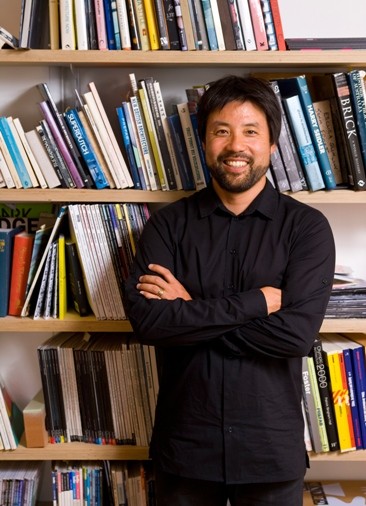John Choi, director at Choi Ropiha Fighera and adjunct professor at the University of Sydney, was born in Seoul, Korea.
 He graduated in architecture from University of Sydney with honours in 1996 and established Choi Ropiha Fighera in 2000.
He graduated in architecture from University of Sydney with honours in 1996 and established Choi Ropiha Fighera in 2000.
Choi has previously designed projects in New York, China and Australia.
We speak to him about the New York approach to architecture, handling negative criticism and the importance of Asian art in Australia.
You have worked on several projects in New York. How do you think Australia’s architecture compares to that of New York’s?
Though New York has a huge amount of architectural talent, with much of the land already developed, there is limited opportunity to actually work on architecture. Hence many architects use the city as an intellectual and networking base with the project opportunities occurring in places outside of New York. Perhaps due to this tough condition, the practices that do emerge are extraordinarily talented. The challenging conditions act as an incubator and an attractor of talent, drawing more to come and contribute to the cultural energy there.
Australia may not have the intensity of discourse that exists in New York, but we have more opportunities to practice. This is particularly so with residential architecture. The breadth and depth of residential architecture in the country is unmatched — quite exceptional given our population base. I see Australia increasing its dialogue on global urban and architectural issues and the work reflecting this.
What has been the most challenging project you have worked on?
My most challenging work has been working with clients in China. We were working in an arrangement where we were receiving client input through several layers of people, including a translator. Pardon the pun — it was like a game of 'Chinese whispers' that went on for months.
Have you ever designed a project which has received a harsh negative response?
Yes. It's always hard to receive criticism. As architects we are change agents and our work is often in the public realm, so it's a given that some people will like it and some won't. I try to look at it in this bigger context and accept it as an inherent part of practice.
What inspires you as an architect?
As a kid, I was drawn to people like Thomas Edison whose inventions reshaped the world. I have always been interested in technology, science and the visual arts but studying architecture opened up a larger world — history, culture, politics, economics, sociology, identity and philosophy. These perspectives and the specifics of each client is where I draw inspiration now.
You have won many prestigious awards, but what is the most rewarding part about architecture?
Seeing the impact that the work and the design process can have on our clients and the city, particularly when clients seek something exceptional and are inspired by ambitions beyond their immediate lifestyle or business needs. Awards are rewarding personally but ultimately it’s the value and meaning that the work offers to our clients and the city that remains.
You are on the board for the 4A Centre for Contemporary Asian Art. How and why did you become involved with the Centre?
I joined the board in 2009 upon an invitation by a departing member. I believe that Asian cultural thinking will have an important impact on Australia's future and that contemporary art has an important role to play.
If you weren’t an architect, what would you be doing?
I’m not sure. I can't really imagine doing anything else now.

